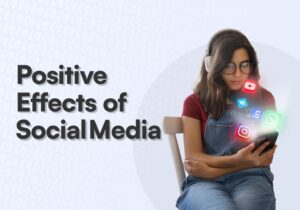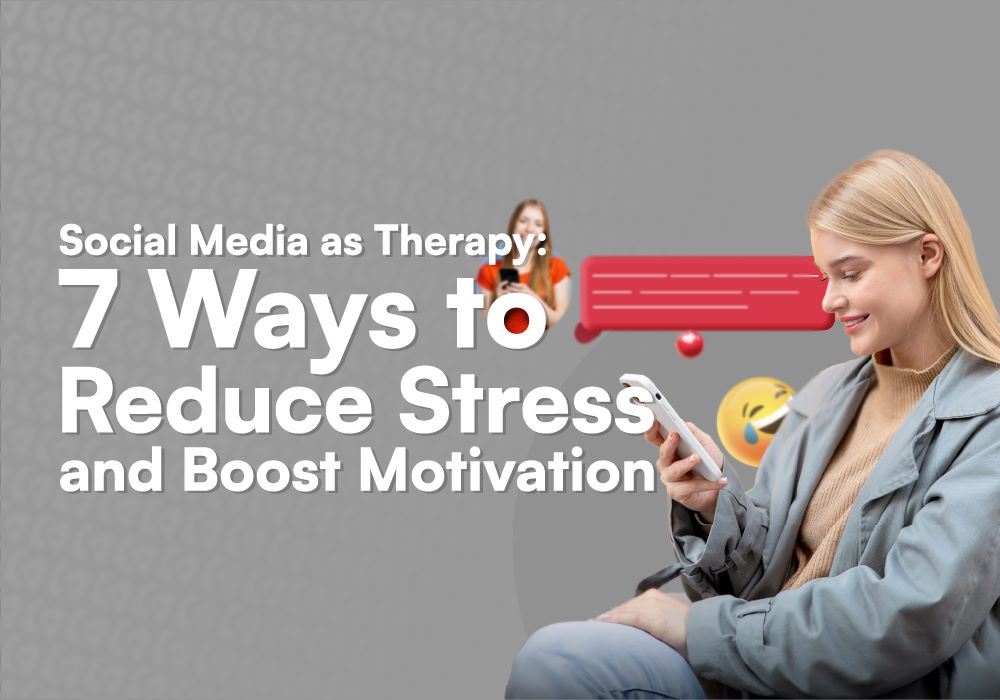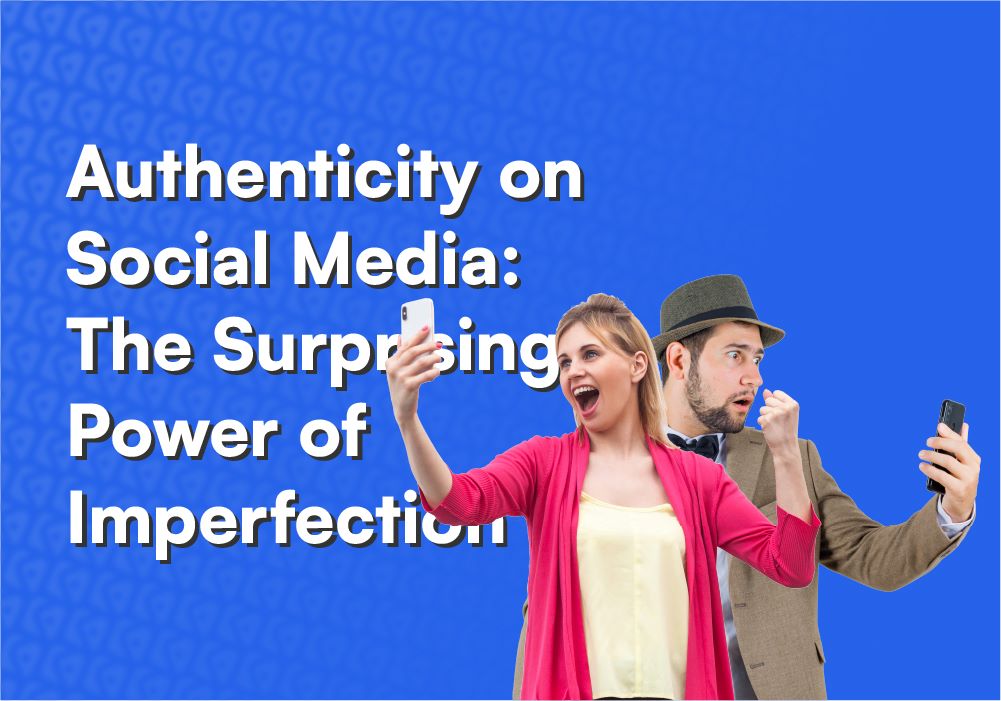Et eksempel på et scenarie for sociale medier som terapi
For at udforske emnet mere i dybden, lad os starte med følgende scenario: En mand i slutningen af 50'erne har mistet sin bedste ven i en ulykke og er så deprimeret, at han ikke kan koncentrere sig ordentligt. Situationen eskalerer til det punkt, hvor han er i fare for at miste sit job. Han besøger derefter en erfaren psykologisk rådgiver, som giver ham effektiv rådgivning. Hun foreslår, at han ser sjove videoer fra bestemte TikTok-kanaler som en måde at distrahere sig selv på. Hun giver ham også en liste over NLP-coaches på YouTube. Han følger hendes råd og begynder at se positive resultater.
I dette eksempel bruger han sociale medier som en form for terapi.
Hvordan sociale medier påvirker psykisk velvære
sociale medier platforme tilbyder en bred vifte af muligheder for at støtte mental trivsel – en tilgang, der i stigende grad får gennemslagskraft under konceptet social media som terapi.
Hvis du er en iværksætter og vil gerne vide mere om vigtigheden af Sociale Medier, klik her: Sociale Medier for Iværksættere
Positive Effekter af Sociale Medier
- Social media platforme giver brugerne mulighed for at connecte med ligesindede. De gør det også nemt at holde kontakten med familie og venner over hele kloden.
- Folk i alle aldre kan hente inspiration fra motiverende indhold.
- Humoristiske eller beroligende opslag giver effektiv stressaflastning og fremmer en følelse af forbindelse og støtte – nøgleelementer, når man bruger sociale medier som terapi.
- Brugere kan (med omtanke) udforske værdifulde informations- og læringskilder.
- Sociale forbindelser: Disse platforme gør det lettere at kommunikere med venner og familie, reducere ensomhed og styrke relationer – især for isolerede eller introverte personer.
- Emotionel støtte: I svære tider giver sociale medier plads til empati, råd og fælles oplevelser, hvilket hjælper med at opbygge psykisk modstandskraft.
- Adgang til information: Internettet giver hurtig adgang til viden og fremmer både personlig og professionel vækst gennem artikler, videoer og forskning.
- Underholdning: Online indhold som spil, film og musik hjælper med at reducere stress og fremmer afslapning og gode vibes.

Bevidst brug af sociale medier for at forbedre velvære og fællesskab
Fællesskabers og gruppers rolle: Fællesskaber og grupper spiller en vigtig rolle på sociale medier. Gruppemedlemmer – for eksempel i en Telegram-gruppe – kan udveksle idéer med ligesindede og give hinanden følelsesmæssig støtte i svære tider. Denne form for digital forbindelse er en vigtig del af sociale medier som terapi, da den styrker tilhørsforhold, selvværd og følelsesmæssig modstandskraft.
Bevidst brug af indhold: I en digital verden fuld af forstyrrelser er det vigtigt at forbruge indhold bevidst i stedet for at lade det kontrollere dig. Dem, der bruger sociale medier med opmærksomhed, kan forbedre deres velbefindende – et kerneformål med sociale medier som terapi – og støtte deres personlige vækst.
Filtrer indhold for at fokusere på det positive: Ved omhyggeligt at vælge, hvilke konti du følger, og filtrere negativt indhold fra, kan du forvandle din feed til en kilde til inspiration. Studier viser, at kurateret indhold kan forbedre den følelsesmæssige velvære – et grundlæggende princip i den terapeutiske brug af sociale medier.
Følg konti, der fremmer personlig vækst: Konti, der fokuserer på selvrefleksion, motivation, mindfulness eller læring, kan styrke dig dagligt og bidrage til digital selvpleje – et praktisk eksempel på, hvordan sociale medier kan bruges terapeutisk.
Skil Bevidst Brug fra Passiv Rulning: Forskellen mellem aktiv og passiv brug er afgørende: aktivt at dele, kommentere eller skabe indhold fremmer forbindelse og selvværd. Passiv scrolling kan derimod føre til sammenligninger, utilfredshed og mental udmattelse – risici, der bør undgås bevidst, når man bruger sociale medier som terapi.
Videoer og livestreams: Søg efter klip, der motiverer eller afslapper dig – som “live coaching” eller “meditationssessioner.” Disse formater er især velegnede, når du bruger sociale medier som terapi, da de direkte engagerer følelser og hjælper med at reducere stress.
Interaktivt indhold Kanaler, der deler indhold som udfordringer, opgaver eller mini-coaching-sessioner, skaber kreativitet og engagement. De skaber øjeblikke af flow og aktiv deltagelse – essentielle elementer i den terapeutiske brug af sociale medier.
Psykologiske mekanismer bag konceptet Sociale medier som terapi
Emotionel Resonans Inspirerende indhold udløser ofte dybe følelsesmæssige reaktioner. Ved at aktivere spejlneuroner oplever du glæde, medfølelse eller motivation—selv når øjeblikkene kun er virtuelle. Disse empatisk reaktioner er et nøgleelement i sociale medier som terapi, da de styrker vores følelsesmæssige forbindelse til verden og støtter mental velvære.
Distraktion og flow-tilstand: Når du bevidst fokuserer på indhold, kan det midlertidigt reducere stress—et kerneelement i sociale medier som terapi. Især kreative eller interaktive formater som videoer, udfordringer eller legende opgaver kan hjælpe dig med at komme i en flow-tilstand. I denne tilstand glemmer du dine bekymringer og bliver helt opslugt af aktiviteten. Denne bevidste distraktion hjælper med at frigive følelsesmæssig spænding og øger den generelle velvære.
Øge motivationen: Sociale medier giver dig adgang til inspirerende rollemodeller og gennemprøvede succésstrategier. I forbindelse med sociale medier som terapi kan sådan indhold være meget motiverende: det styrker ambitionen, åbner nye perspektiver og opfordrer til selvrefleksion og personlig vækst. Din digitale forbrug bliver dermed et positivt impuls for udvikling.
Sociale medier som erstatning for terapi? Ja eller nej?
Nu vender vi tilbage til spørgsmålet rejst i introduktionen: Kan sociale medier virkelig erstatte terapi?
Social media er fyldt med taler og opslag, der får os til at tænke. Selvom sådan indhold kan være inspirerende, er det egentlige spørgsmål, om det kan erstatte professionel terapi. Lad os antage, at indholdet deles af autoriserede terapeuter. Selv da er det ikke ægte terapeutisk arbejde. Og hvis ikke-professionelle deler råd om mental sundhed, er de enten ude på at give meninger eller dele personlige erfaringer.
Ikke alle råd online er beregnet til dig. For meget selvrefleksion kan endda have skadelige virkninger. Hvis du føler dig fastlåst eller overvældet, så søg professionel hjælp. Sociale medier er ikke den virkelige verden — og det bør de aldrig behandles som.

Konklusion
Sociale medier er ikke ægte terapi. Det kan støtte terapeutiske processer, give motivationsimpulser og hjælpe dig med at navigere gennem følelsesmæssige kriser på kort sigt—men det erstatter ikke kvalificeret psykologisk behandling.
Professionelle terapeuter har omfattende uddannelse, superviseret klinisk erfaring, akkrediterede grader, licenser og certifikater. De arbejder ud fra evidens og skræddersyede tilgange – ikke generelle meninger, personlige overbevisninger eller virale trends. Deres mål er ikke at generere klik, men at guide folk gennem målrettede indsatser og skabe ægte, varig forandring.
Indhold på sociale medier, der inspirerer, kan helt sikkert være en del af din hverdag. Men vær opmærksom: bare fordi noget bliver viral, betyder det ikke, at det er korrekt — eller det rigtige for dig.
Hvis du føler dig fastlåst, overvældet af angst eller hjemsøgt af gamle sår, er det tid til at søge hjælp hos professionelle. Sociale medier kan give støtte — men det er ikke et sikkert sted. Det ligger i ægte terapeutisk vejledning.


